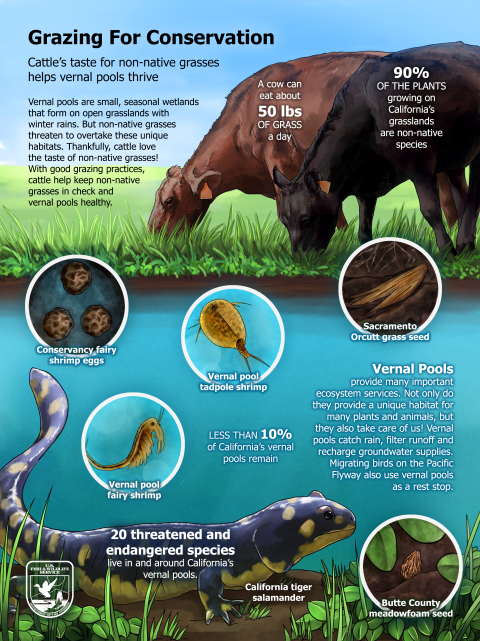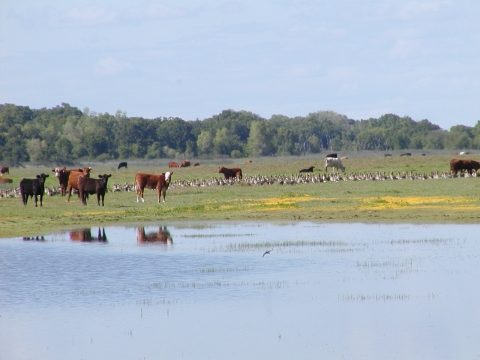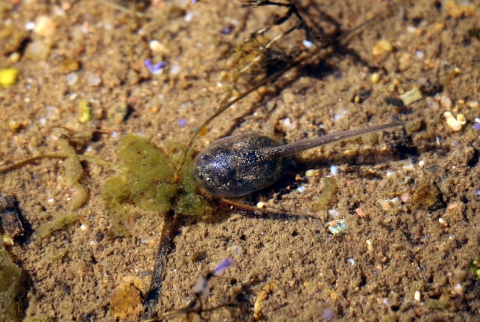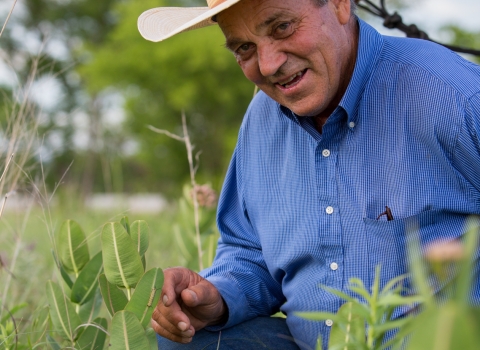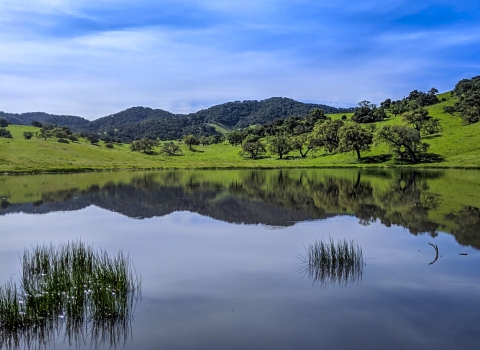This unlikely pair may never meet nose-to-nose, but California tiger salamanders can thank cattle for keeping their vernal pool habitats healthy.
Vernal pools are small bodies of water that form from winter rainfall and create a unique home for tiny, freshwater invertebrates and are used by amphibians for breeding. But vernal pools are disappearing across California’s grasslands due to invasive grasses.
Cattle to the rescue! Cattle love to munch on the non-native grasses that can choke the edges of these special seasonal wetlands. With cattle keeping invasive plants under control, the vernal pools continue to exist, grasslands remain healthy, and biodiversity thrives.
But cattle can’t do this on their own. Ranchers carefully monitor the thatch level, or the density of grass and other plants, across the grasslands. They move grazing cattle around the land to keep the thatch at a level that reduces the non-native grasses but doesn’t result in overgrazing. Finding this balance is important for keeping vernal pools on the landscape.
When vernal pools are kept at peak performance, they provide important ecosystem functions, including retaining rainfall, filtering runoff, and replenishing groundwater supplies. Additionally, a wide variety of animals depend on them. Endangered species such as the California tiger salamander, Conservancy fairy shrimp, and vernal pool tadpole shrimp call these tiny bodies of water home and depend on them for reproduction. Birds migrating along the Pacific Flyway also use the pools for rest and a meal.
There’s no doubt about it — good conservation comes from great partnerships.
Infographic description: Title reads, grazing for Conservation
Subtitle reads, cattle’s taste for non-native grasses helps vernal pools thrive
Intro text reads, vernal pools are small, seasonal wetlands that form on open grasslands with winter rains. But non-native grasses threaten to overtake these unique habitats. Thankfully, cattle love the taste of non-native grasses! With good grazing practices, cattle help keep non-native grasses in check and vernal pools healthy.
Text site 2 reads, vernal pools provide many important ecosystem services. Not only do they provide a unique habitat for many plants and animals, but they also take care of us! Vernal pools catch rain, filter runoff and recharge
groundwater supplies. Migrating birds on the Pacific Flyway also use vernal pools as a rest stop.
Illustration of brown cow with overlay text reads, a cow can eat about 50 pounds of grass a day.Illustration of black cow with overlay text reads, 90% of the plants growing on California’s grasslands are non-native species.
Center text reads, less than 10% of California’s vernal pools remain
Illustration of California tiger salamander with overlay text reads, 20 threatened and endangered species live in and around California’s vernal pools.
Infographic also features the following species in circles: Conservancy fairy shrimp, vernal pool fairy shrimp, vernal pool tadpole shrimp, Sacramento Orcutt grass seed and Butte County meadowfoam seed.


